It’s the time of year when homeowners are starting to think about their winter projects. One project that often comes up is painting a sandstone fireplace. Painting a sandstone fireplace can be a big job, but it’s definitely doable! In this article, we will answer some common questions about painting a sandstone fireplace and provide some tips to help you get the job done right.
Why Should You Paint Your Fireplace?
Painting your sandstone fireplace can be a great way to update the look of your home in no time. Painting is one of the quickest and most cost-effective ways to change the look of any room, and painting a sandstone fireplace is no exception! A good paint job can instantly transform the look of your living space and make it feel more inviting. Plus, regular maintenance such as painting helps protect your fireplaces from damage due to water seepage or other wear and tear over time. [1]
What Type of Paint Should Be Used on a Sandstone Fireplace?
When it comes to painting a sandstone fireplace, the type of paint you choose is critical. Latex-based paints are typically the best choice for this job because they provide superior coverage and adhesion. In addition, latex-based paints come in a variety of sheens, so you can choose one that will best suit your home’s decor and style. You should also consider using an exterior-grade paint if your fireplace is exposed to bad weather as this will help protect it from moisture damage.
No matter which type of paint you choose, it’s important to make sure you clean the sandstone fireplace thoroughly before starting the painting process. This will help ensure that the paint sticks properly and creates a long-lasting finish. You should also use protective gear such as goggles, gloves, and a face mask when painting your fireplace to prevent any inhalation of fumes or particles.
Now that you know what type of paint is best to use on your sandstone fireplace, let’s take a look at how best to apply it. The key is to create thin layers as thicker ones can lead to cracking or flaking. Additionally, the primer should be applied in several thin layers to create a strong bond between the fireplace stone and the paint. Before applying each coat of paint, it’s important to let the previous layer dry completely. Once everything is dry, you can follow up with a final coat of sealant for extra protection.
Painting your sandstone fireplace may seem like an intimidating task, but as long as you follow these steps, you can achieve beautiful results that will last for years to come. All it takes is some preparation and careful painting techniques! With the right supplies and attention to detail, you can soon have a stunningly transformed fireplace that will give your home a fresh new look. [2]
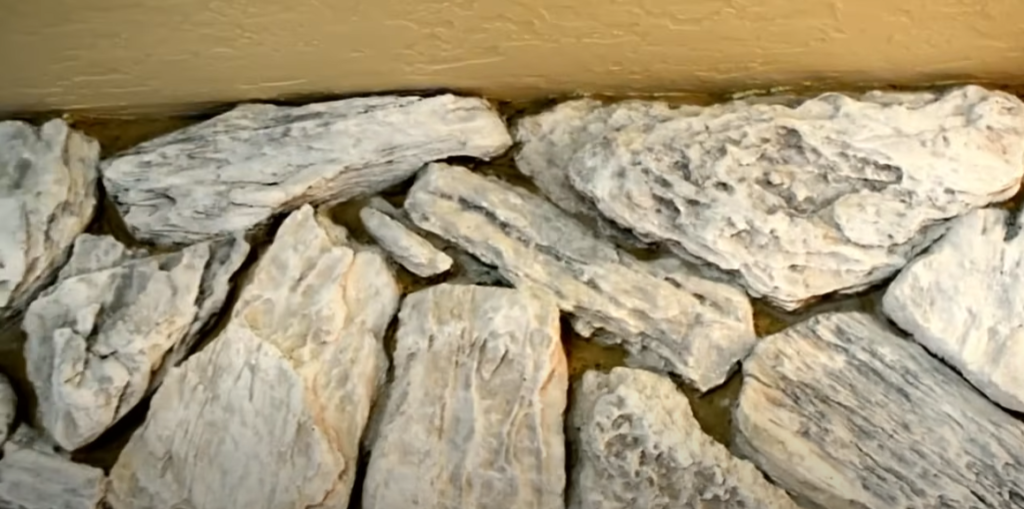
Here’s How to Paint a Sandstone Fireplace
Painting a sandstone fireplace is no easy feat, but it can be done with the right tools and techniques. This guide will help you get started!
Prepare for Painting
The first step in painting a sandstone fireplace is to prepare the surface. You will need to clean the stone, remove any loose debris and make sure it’s dry before you begin. Start by using a wire brush or a soft bristle brush to scrub away any dust or dirt that has accumulated on the stone. Next use a vacuum cleaner with an attachment to get rid of any remaining dirt or debris. If there are any stubborn spots, use water and mild dish soap to clean them up. Make sure you rinse with clear water afterward and let the area dry completely before moving on. Once your sandstone fireplace is ready for painting, you can start prepping for the job at hand.
Choose the Right Paint
When it comes to painting a sandstone fireplace, you need to make sure that you use the right kind of paint. You should look for a high-quality latex or oil-based paint designed specifically for masonry surfaces. Avoid using acrylic paints as they are not designed to stick to smooth stone surfaces like sandstone and may end up flaking off over time. Make sure that whatever type of paint you choose is suitable for both indoor and outdoor use which helps ensure long lasting results.
Prime and Paint the Fireplace
One of the most important steps to painting a sandstone fireplace is priming. This will allow the paint to adhere better and give you a more professional look in the end. Start by brushing on an oil-based primer, and make sure you get into all the nooks and crannies of your sandstone’s surface. Allow this layer to dry completely before beginning with your top coats of paint.Once you have primed your fireplace, it’s time to begin applying the actual paint. Again, use an oil-based product for best results. You can apply one or two layers depending on how intense of a color change you are looking for, but be sure that each coat is allowed enough time to dry completely before you apply the next. When it’s all said and done, your sandstone fireplace should have a new look that will make you proud of your accomplishment!
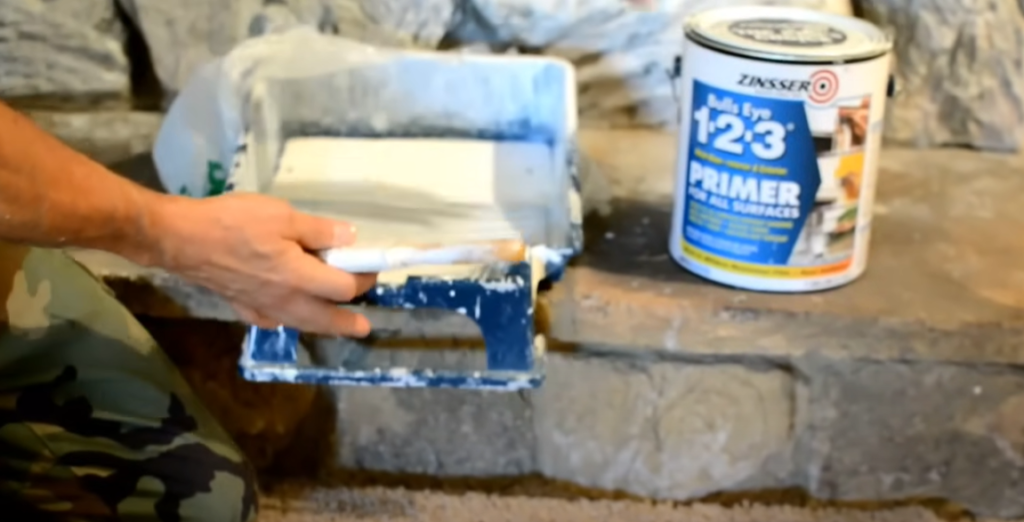
Clean Up
The first step in painting a sandstone fireplace is to make sure it’s clean. Over time, soot and dirt can build up in the crevices of the stone and needs to be removed before you start painting. Use a stiff brush and some mild detergent to scrub the surface of the stone. Make sure you get into all the nooks and crannies, as any dirt or debris could interfere with your paint job. Once you’re done, use a damp cloth to remove any residue and let it dry completely before starting your painting project. [3]
What to Consider When Painting Sandstone Fireplaces
When you decide to paint a sandstone fireplace, there are several key considerations to keep in mind. The type of sandstone used and the condition of the stone should be carefully evaluated before proceeding with a painting project. Here are some important factors to consider when deciding whether or not to paint a sandstone fireplace:
- Sandstone Quality: Not all sandstones are created equal – some may be more porous than others, making them difficult to finish with paint. For this reason, it is essential that you evaluate the specific type of sandstone used for your particular fireplace before deciding if it can be painted.
- Condition of Stone: It’s also important to assess any damage or discoloration present on the sandstone before painting. Sandstone is a naturally porous material, so if there are any cracks or discolorations present, they will need to be filled in with filler or joint compound prior to painting.
- Color Choice: The color you choose for your sandstone fireplace can make all the difference when it comes to aesthetic appeal. Be sure to consider both how the color works with the overall design of the space and how it looks on the stone itself. It’s a good idea to get samples of various colors and test them out on small sections of stone first before committing to a full-on paint job.
- Type of Paint: Finally, ensure that you select an appropriate type of paint for the job. Paints with a higher sheen tend to work better on sandstone than lower-sheen options since they’re less prone to fading or peeling over time. Additionally, be sure to opt for a paint that is designed to adhere well to natural stone surfaces and can withstand high temperatures.
By taking the time to consider these key points before beginning your project, you’ll be able to ensure that the painting of your sandstone fireplace will last for many years to come. Read on for our recommended products and tips for painting your own sandstone fireplace! [4]
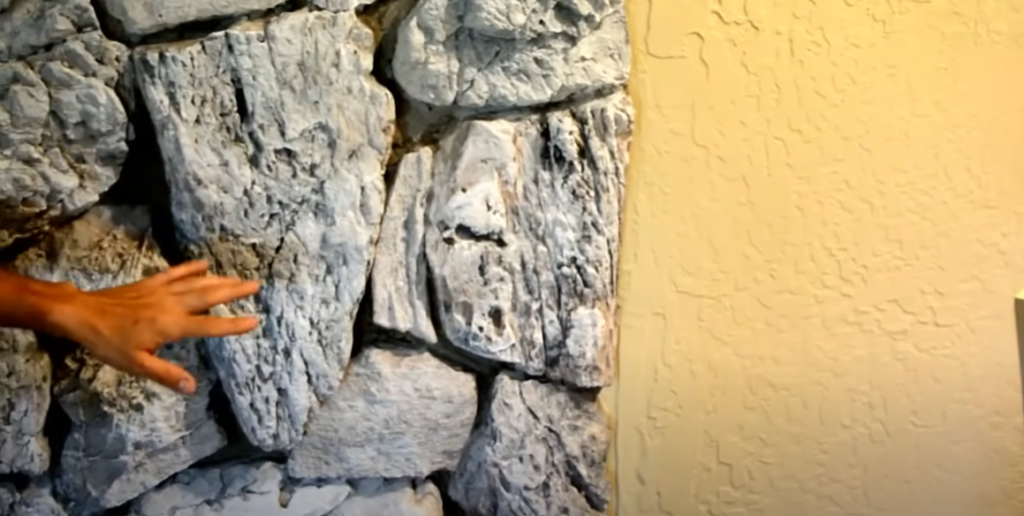
How To Paint a Sandstone Fireplace for a Natural, Textured Look
If your fireplace is made from sandstone, you may be wondering if it can be painted. The good news is that yes, you can paint a sandstone fireplace! Sandstone is a porous material, which means it will accept paint and can help create a natural textured look in your living space. However, there are some precautions to take before starting this project – here’s what you need to know about painting sandstone fireplaces.
How To Paint a Sandstone Fireplace Surround
Painting a sandstone fireplace can be an intimidating task. If done properly, however, it can transform the look of your living space and add some much-needed character to your home. To help you out, here is a guide on how to paint a sandstone fireplace surround to perfection!
First off, it is important to assess the condition of your sandstone fireplace before starting any painting process. If there’s any cracking or crumbling in the stone or around the edges, make sure you repair it first with mortar mix before proceeding with any painting step. This will ensure that whatever design you’re working on stays intact for years to come.
Once your repair work is complete, start by cleaning the fireplace with a mixture of soap and water. This will help remove dirt, dust, and any other debris that can affect the paint job’s outcome. After this step is completed, you can now start prepping the surface for painting.
Using sandpaper or an electric sander, lightly scuff up the surface of your sandstone fireplace to create a rougher texture for the paint to adhere to better. Once done, use a damp cloth or rag to wipe away any residual dust from sanding. Allow the surface to dry completely before starting the painting process.
Next, choose which type of paint you want to use on your sandstone fireplace – latex-based paints work best for fireplaces as they are heat-resistant and create a smooth finish. Before you begin painting, make sure to prime the surface with an appropriate primer that is suitable for masonry surfaces. This will prevent any streaks or uneven surfaces from developing during the painting process.
Once your primer has dried, start painting your sandstone fireplace in light layers, allowing each coat to dry completely before adding another one. If done correctly, this will ensure that you get even coverage and the best possible outcome for your project. When all coats are finished and have completely dried, apply a sealant to protect it from water damage or any other elements that can cause wear and tear over time. [5]
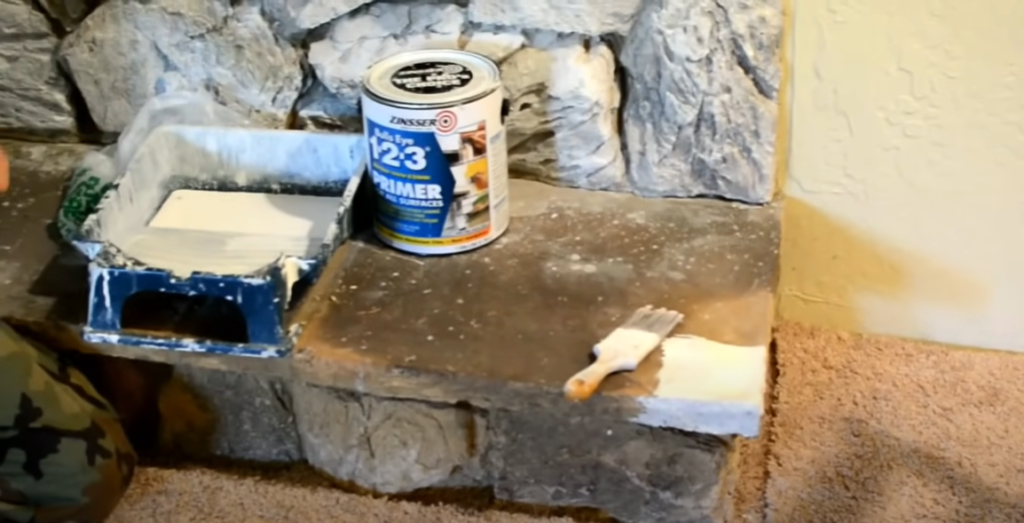
How To Paint the Inside Firebox of a Sandstone Fireplace
When painting the inside firebox of a sandstone fireplace, it’s important to take special care as this part of the fireplace is exposed to more heat than other areas. To begin, you should make sure that any loose mortar or debris has been removed from the surface and that the area is completely sealed off with painter’s tape.
Once the area has been prepped, you should use a high-temperature paint designed specifically for fireplaces. You can find these paints in both oil-based and water-based formulas and it’s important to choose one suitable for your particular type of stone so that you get an even finish. If using oil-based paint, be sure to ventilate well as the fumes can be toxic.
When applying the paint, use a brush with natural bristles and work in small sections. If you’re using multiple coats of paint, allow each coat to dry before moving on to the next one. Once all coats have been applied, it’s important to let the paint cure for at least 24 hours before lighting any fires or using the fireplace again. This will ensure that the paint has had time to fully set and won’t flake off when exposed to heat.
FAQ
What kind of paint do you use on sandstone?
When painting a sandstone fireplace, it’s important to choose a paint that can stand up to the elements. A high-quality exterior latex paint is the best choice for sandstone surfaces as it will provide maximum protection and durability. If you are concerned about color fading over time, look for paints with an ultraviolet (UV) protector included in the formulation. You should also make sure that the paint is rated for use on masonry surfaces so that it will adhere properly and protect your fireplace from moisture damage.
How do you update the sandstone fireplace?
Painting a sandstone fireplace is an easy and affordable way to give it a fresh new look. Sandstone fireplaces can be painted with any color of paint, allowing homeowners to bring out their own unique style in their home. This guide will provide step-by-step instructions on how to get the job done correctly, as well as some tips on which products to use for best results.
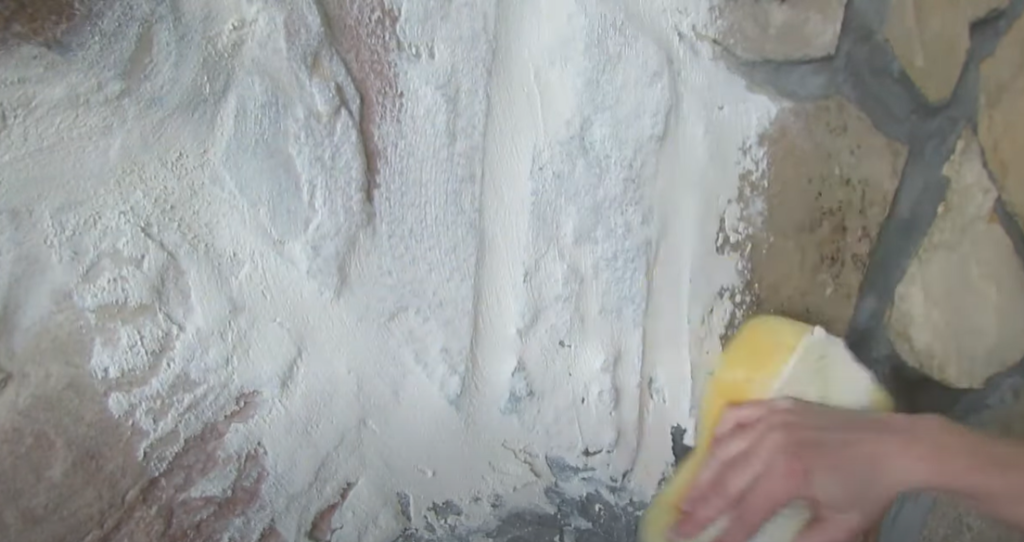
What kind of paint do you use on a stone fireplace?
When it comes to painting a sandstone fireplace, you need to make sure that you are using the right paint for the job. You should opt for an exterior latex or acrylic-based paint, as this type of paint is highly durable and able to withstand high temperatures. It’s also important to use a primer on the stone first before applying any paint, as this will help ensure better adhesion and coverage. Once your primer has dried completely, you can begin painting your stone with two coats of your chosen paint color. Make sure that each coat is allowed to dry thoroughly before adding another one.
How do you change the color of a stone fireplace?
When it comes to changing the color of your sandstone fireplace, you have several options at your disposal. The most popular option is to paint the stone with a water-based or oil-based high-temperature paint, which can be found in a variety of colors and finishes. Other methods include using stains, sealants, and glazes to transform the look of your stone. If you are looking for a more permanent change, you can also consider resurfacing your fireplace with natural or artificial stone veneer.
Can you change the color of sandstone?
Sandstone is a beautiful material for fireplaces, but its natural color can be quite limiting when it comes to decorating. Fortunately, you don’t have to resign yourself to the same hue if you grow bored with it; sandstone is in fact very adaptable and can be painted with relative ease. In this guide, we’ll explore how to go about painting your sandstone fireplace, including what supplies you’ll need and the best techniques for achieving optimal results.
Should I paint sandstone?
This is a common question, but the answer isn’t always straightforward. While sandstone can be painted, it’s important to take into account the age and condition of the material before doing so. Older pieces may not take paint well, while newer pieces should hold up fine with proper preparation. Additionally, sandstone is a porous material that will absorb some of the paint; this means you may need more coats than you would on other materials like brick or stone.

How do you whitewash a sandstone fireplace?
Whitewashing is an easy and cost-effective way to give your sandstone fireplace a fresh new look. All you need to get started is a few basic tools, some white paint, and a little bit of patience.
Step 1: Start by vacuuming the entire area inside and outside of your fireplace. This will help remove any dust or debris that may be stuck in the nooks and crannies.
Step 2: Next, you’ll need to mix your white paint and water together in order to create a thin solution. The ratio of paint to water should be 1:5 for best results.
Step 3: Using a brush or roller, apply the whitewash to the surface. Work from top to bottom in even strokes and don’t forget to get into all of the crevices.
Step 4: Once you’ve finished painting, let the whitewash dry for several hours before lighting a fire or using your fireplace again.
How do you clean an old sandstone fireplace?
The key to successfully painting a sandstone fireplace is to start with a clean surface. To adequately clean an old sandstone fireplace, begin by removing any loose debris and dirt with a soft brush. Next, mix equal parts warm water and white vinegar in a bucket and use it to scrub the entire surface of the fireplace with a sponge or rag. Rinse the entire surface with clean water and allow it to dry completely.
Why is sandstone good for fireplaces?
Sandstone is a popular choice for fireplaces because of its natural beauty. Its creamy white and yellow tones create a soft, warm atmosphere that many find inviting and homey. Additionally, sandstone is highly durable, so it can withstand temperatures from hot to cold without cracking or crumbling over time. This makes it an ideal material for both indoor and outdoor fireplaces. Another benefit of sandstone is its ability to absorb heat efficiently, making it energy-efficient as well as keeping your energy bills low. Finally, sandstone has naturally occurring minerals that help resist stains and damage from moisture exposure. This makes it easier to maintain than other materials such as brick or stone.
Useful Video: How To Paint A Stone Fireplace In Farrow And Ball
Conclusion
Painting a sandstone fireplace can be a tricky job, but it’s doable with the right preparation and tools. Be sure to follow the steps outlined in this guide carefully to ensure you create a stunning focal point for your home. In addition, take special care to choose quality materials and products that will stand up to heat and wear for years to come. With patience and a little bit of elbow grease, your sandstone fireplace will be the envy of all who see it! Good luck with your project and enjoy the results!
We hope this guide has been helpful in answering common questions about painting a sandstone fireplace. If you have any further queries or would like additional advice, please consult a professional or do more research to ensure your project is done right.
References:
- https://resin-expert.com/en/guide/can-you-paint-a-stone-fireplace
- https://brick-anew.com/resource-center/stone-fireplace-painting-guide/
- https://www.truevalue.com/diy-projects/post/paint-and-stain/paint-a-stone-fireplace
- https://www.direct-fireplaces.com/resources/how-to-paint-a-fireplace/
- https://fireplacepainting.com/painting-a-stone-fireplace/


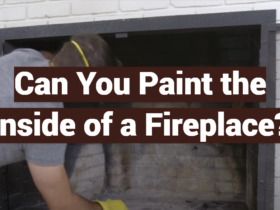


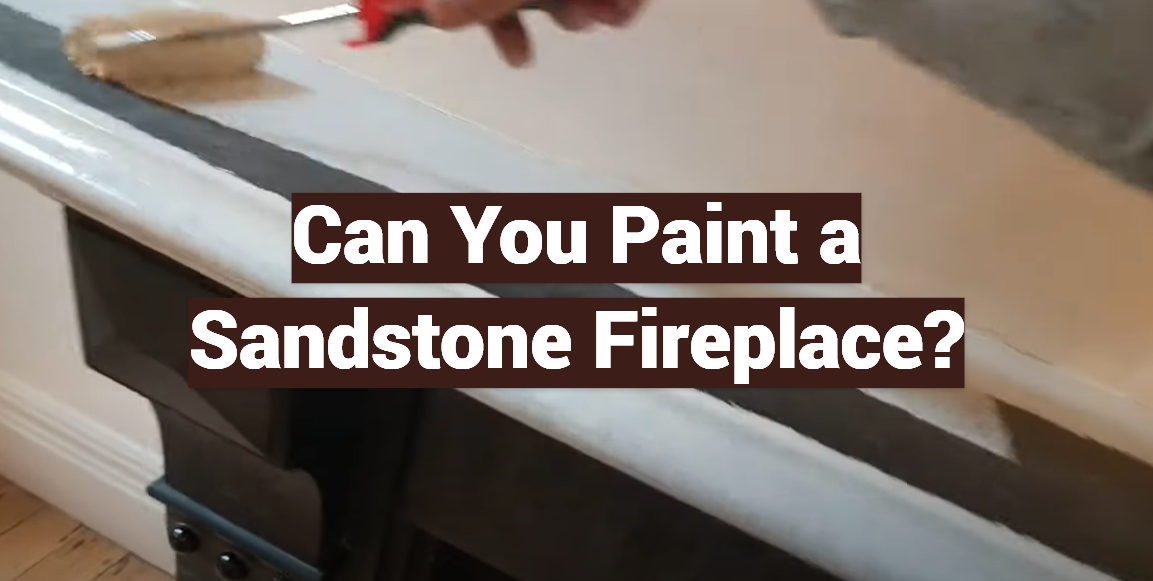




Leave a Review